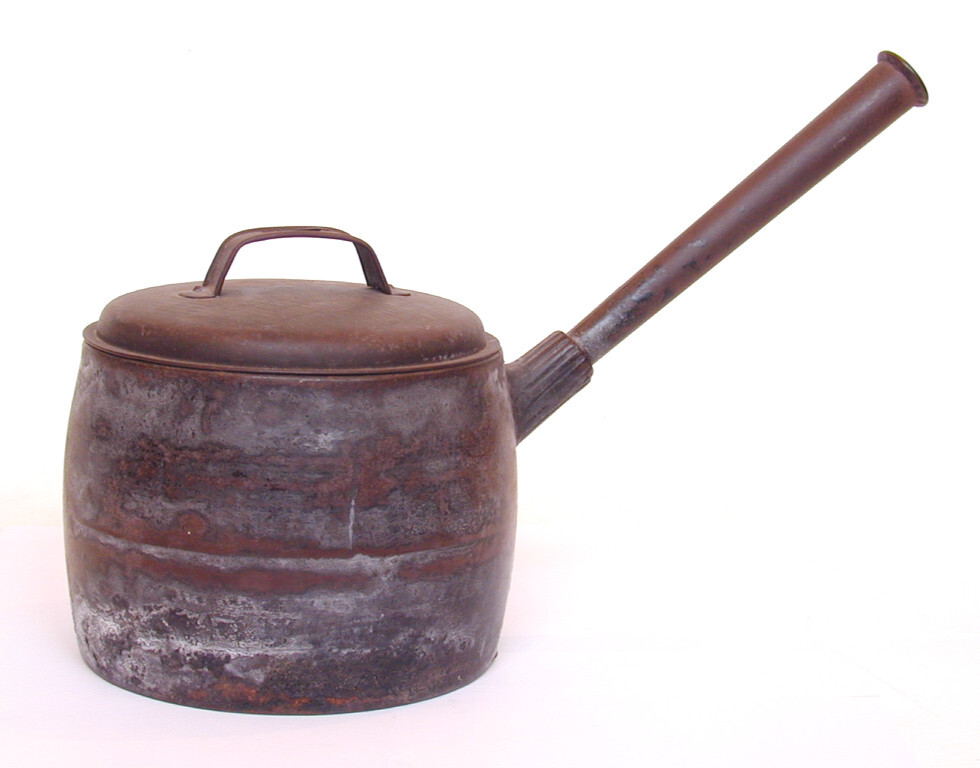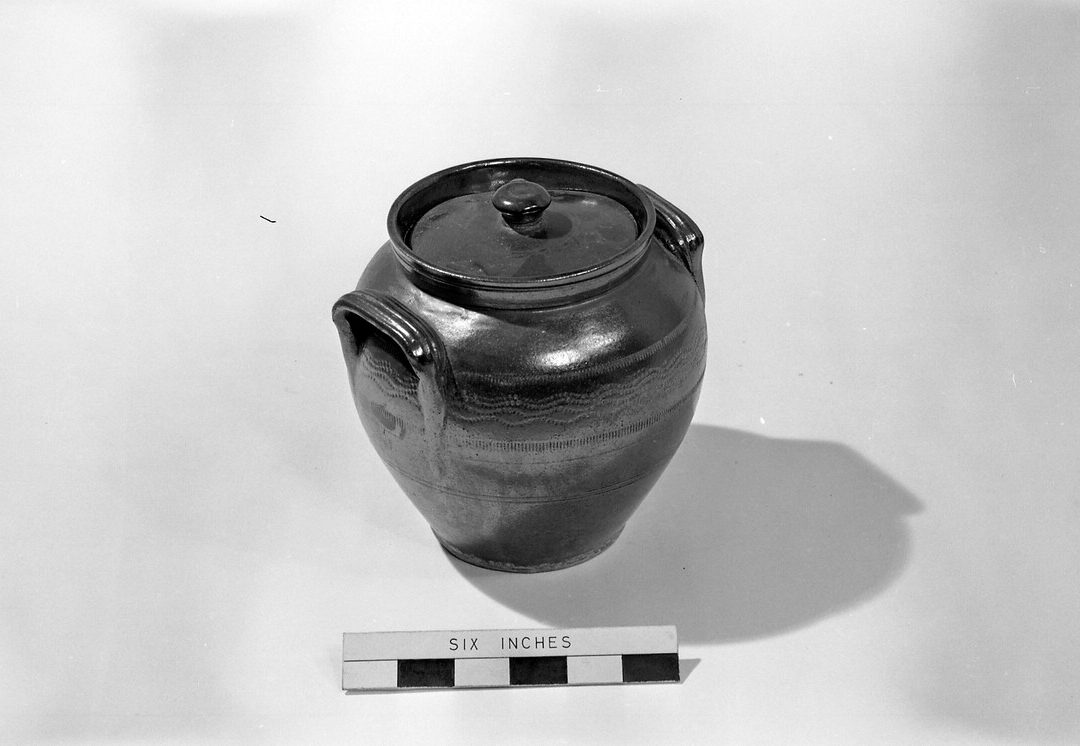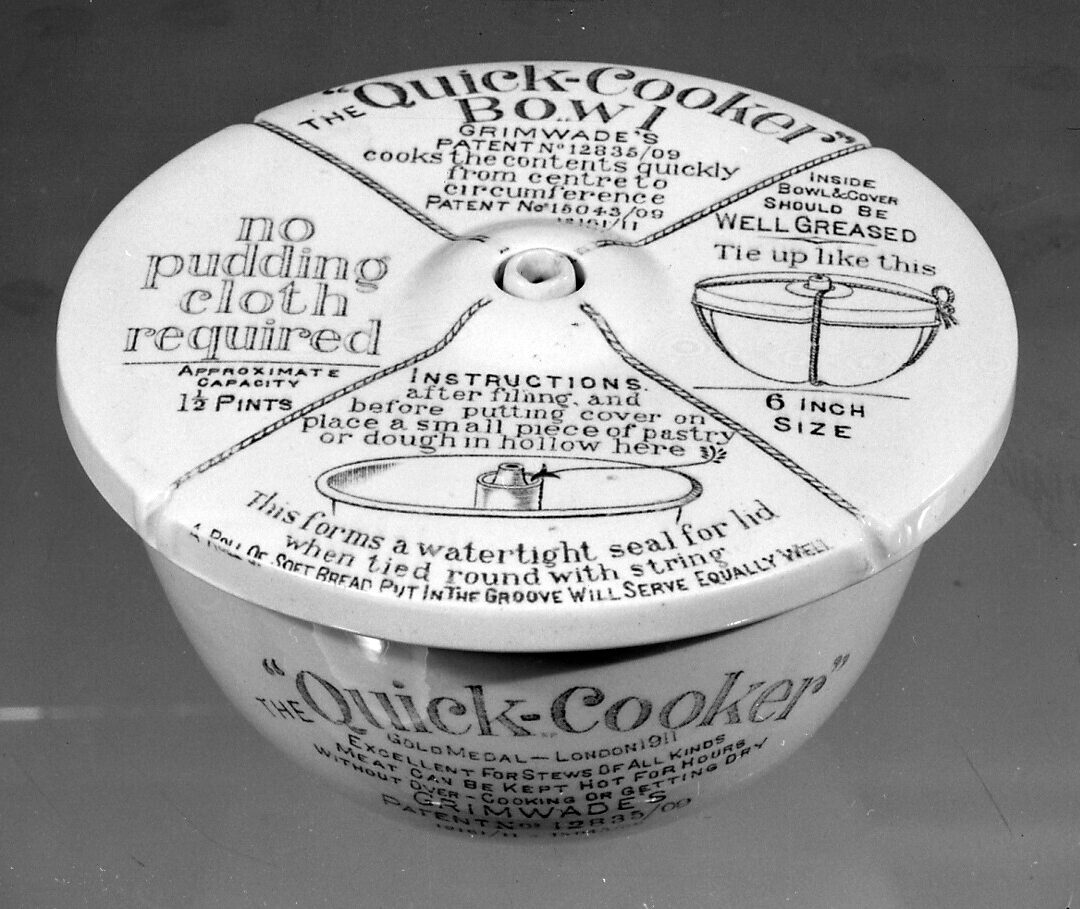Ten rural objects for your student kitchen

Written by Shona Amer, placement student at The MERL.
It’s Freshers Week once again at the University of Reading, and it’s great seeing new people arriving in town to begin their studies!
Many people worry about what to pack and what to bring, and when it comes to cooking, the chances are you won’t need half the stuff you think you will.
So, as we look forward to welcoming freshers and returners back through our doors, we wanted to give you some ideas of the kitchen utensils you may see in our museum and your university kitchen. Some are much better suited to the former than the latter!
Parting dish
When you’re cooking, you’re going to need something to eat off. And for that reason we’d heartily recommend getting a good dish or two.
This brown earthenware ceramic, with a brown glaze and white decoration, is an example of a parting dish, named as such as it was used to part different foodstuffs. It would have been used for meals like a Sunday roast, by having vegetables on one side, Yorkshire pudding on the other, and meat resting on a trivet (a small plate or metal stand) above.
This dish would have been sent out to the fields during harvest, bringing meals to hungry workers. While these were becoming rare at the time of its acquisition by collector Lavinia Smith (whose collection was later donated to The MERL), these are not too dissimilar to the proton dishes we might see today.
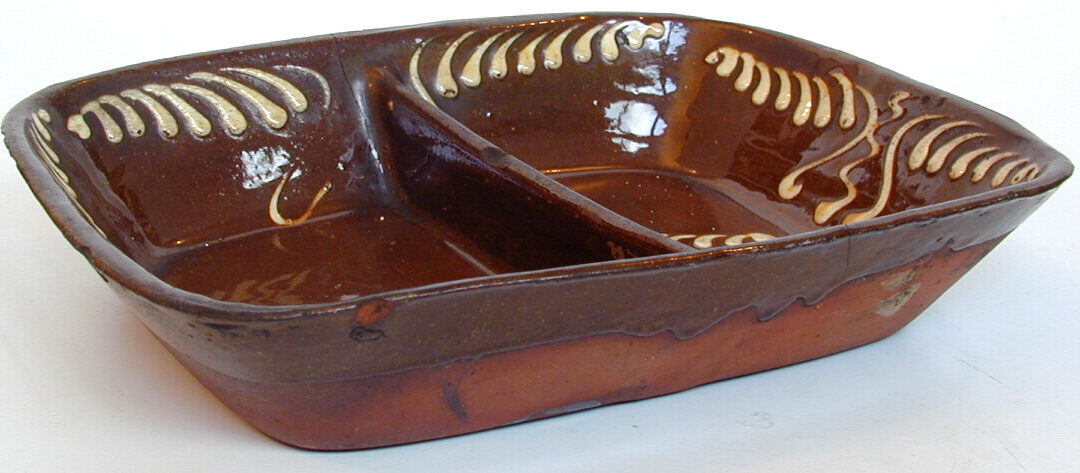
Frying pan
A good pan, especially a good non-stick pan, can be a kitchen essential, from reheating meals to making a quick one-pan wonder (as made by many an innovative University of Reading student over the years). As The MERL was once a university halls of residence, we can be confident that plenty of meals like this would have been made on our premises over the years.
This iron frying pan from our collection is in good condition. As you can see, this object was designed to hang above an open fire, with the swivel ring in the middle being attached to a pothook. The lip at one side allowed easy pouring of its contents.
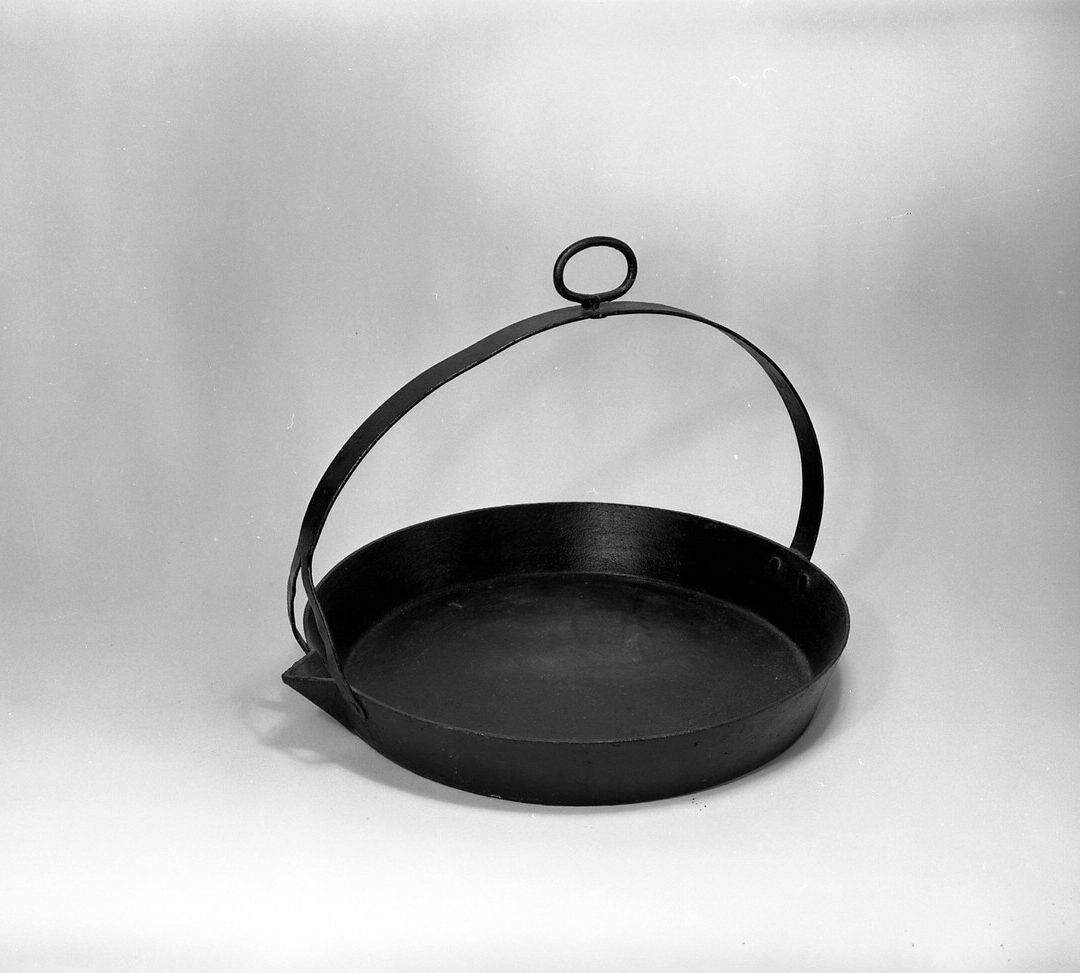
Cooking pot and saucepan
You will want to ensure you have two or three pots or pans. One or two will be sufficient for a decent meal with minimal space, but it will take you longer in the kitchen if you only have one. The more you cook, the more you will need!
This cooking pot is one of several in our collection. It is 34 cm in diameter by 25 cm high, so likely bigger than would be needed for university – even with planning and batch cooking. It was initially used in Somerset and later acquired in West Parley. The pot is a heavy one with three short legs. Like the previous pan, it would have been used in cooking over an open flame.
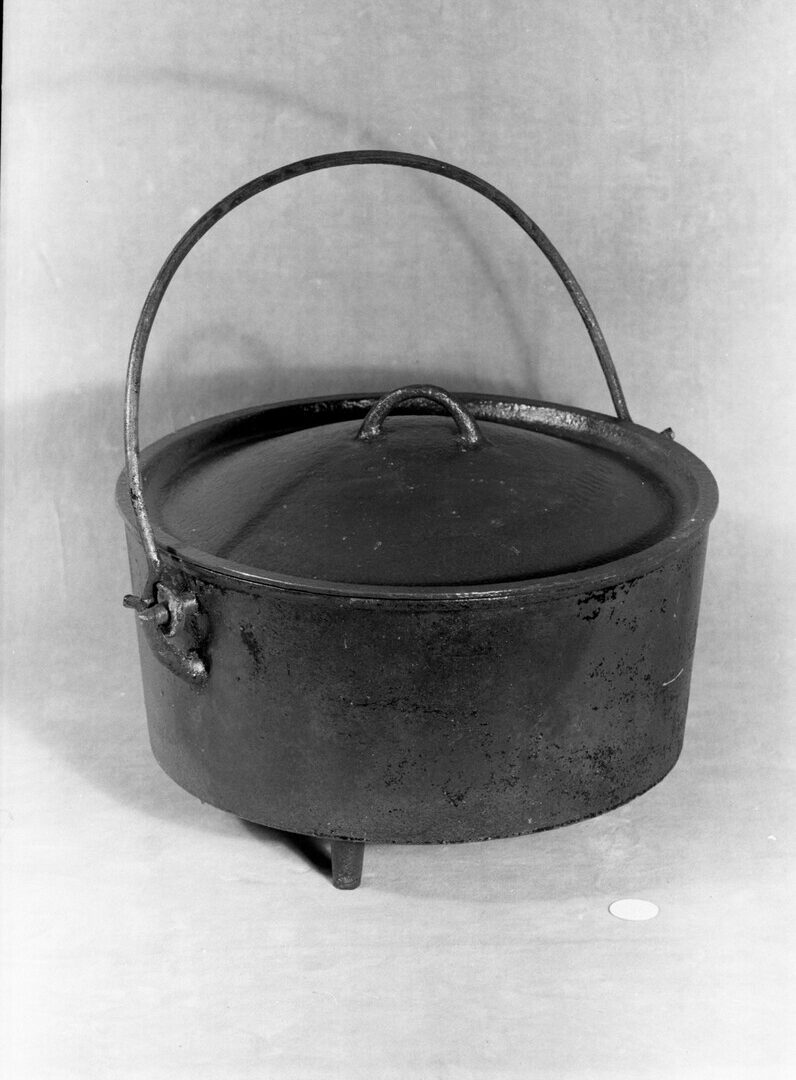
Meanwhile, though this might look like a giant pipe, it is actually one of our iron saucepans. It is 19 cm in diameter by 20 cm high, so slightly smaller than the pot above.
It is a heavy iron object, with a long handle, and we would certainly recommend a more modern, lighter alternative.
This pan was used by the donor’s mother who had lived in Southwark, London. It was manufactured by E. Pugh and Co. of Wednesbury, West Midlands.
Food containers
You will want to bring a few storage containers with you, whether for bringing food to campus or a place to keep leftovers. At a minimum, you will want two or three, but you don’t need to buy expensive ones. The jar from the sauce you’re having with your pasta will make a handy, portion-sized container, or use the lids from takeaways!
This set of a jar and lid from our collection are an example of stoneware once used to store food. We believe this jar and lid came from Normandy, although we’d recommend looking closer to home! How about Big Tesco?
Pepper pot
This blue glass and pewter pepper pot is another item from the Lavinia Smith Collection. The top of the pot features a flat ring screwed into the glass surface and fanning out ornately beneath a curved lid with an ornamental knob in the centre. The curved glass creates a step effect as it descends towards the pewter base.
While we will admit this is a little excessive (okay quite excessive) we would recommend making sure that you have your own pot of pepper, a salt cellar, and whatever other seasonings you will want to use.
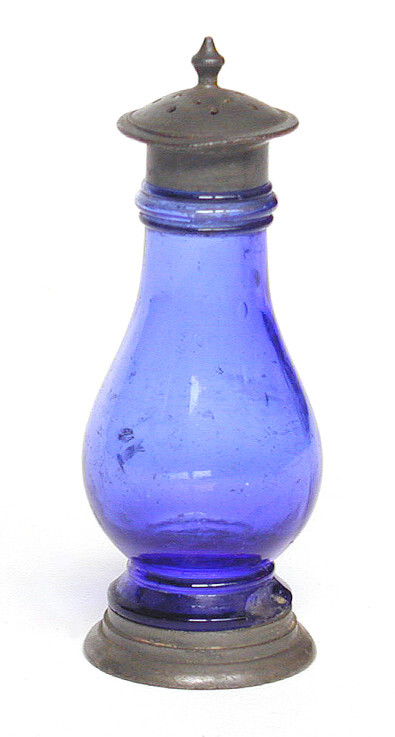
Knife
Knives are arguably one of the most useful utensils that you could find in your kitchen, and they’re possibly one of the few essentials that you will use every day.
This one from our collection shows extensive signs of wear from heavy use and sharpening. We believe it is made from the same stuff as 13ths Sonic Screwdriver: Sheffield Steel, with a handle possibly made from bone. It is one of a collection of kitchen utensils (accessioned under nos. 87/24 to 87/30) used by the donor’s mother, Mrs Vera Maud, of Kempson, London and Suffolk. The donor gave them to The MERL in 1987 after clearing out her late mother’s house.
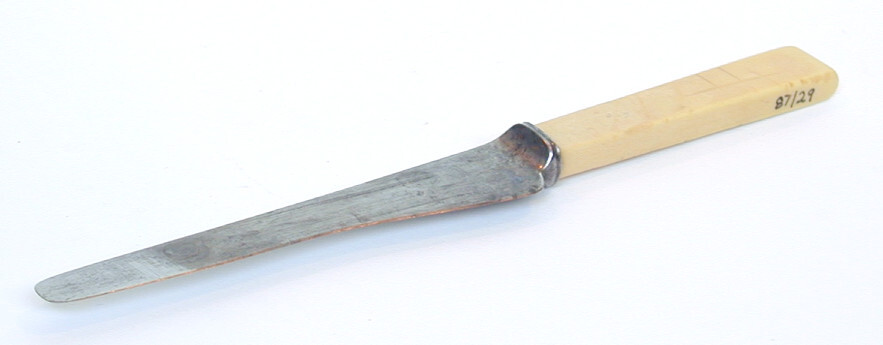
Measuring spoon
Whether you’re following a recipe or cooking up a storm of your own invention, you’ll need some kind of way to measure your ingredients.
Our porcelain measuring spoon has a shape that looks not too dissimilar to a gravy boat. It is white in colour with three bands of black measuring ‘TEA’, ‘DESSERT’, or ‘TABLE’ spoon sizes. The donor purchased numerous objects which were later donated to The MERL.
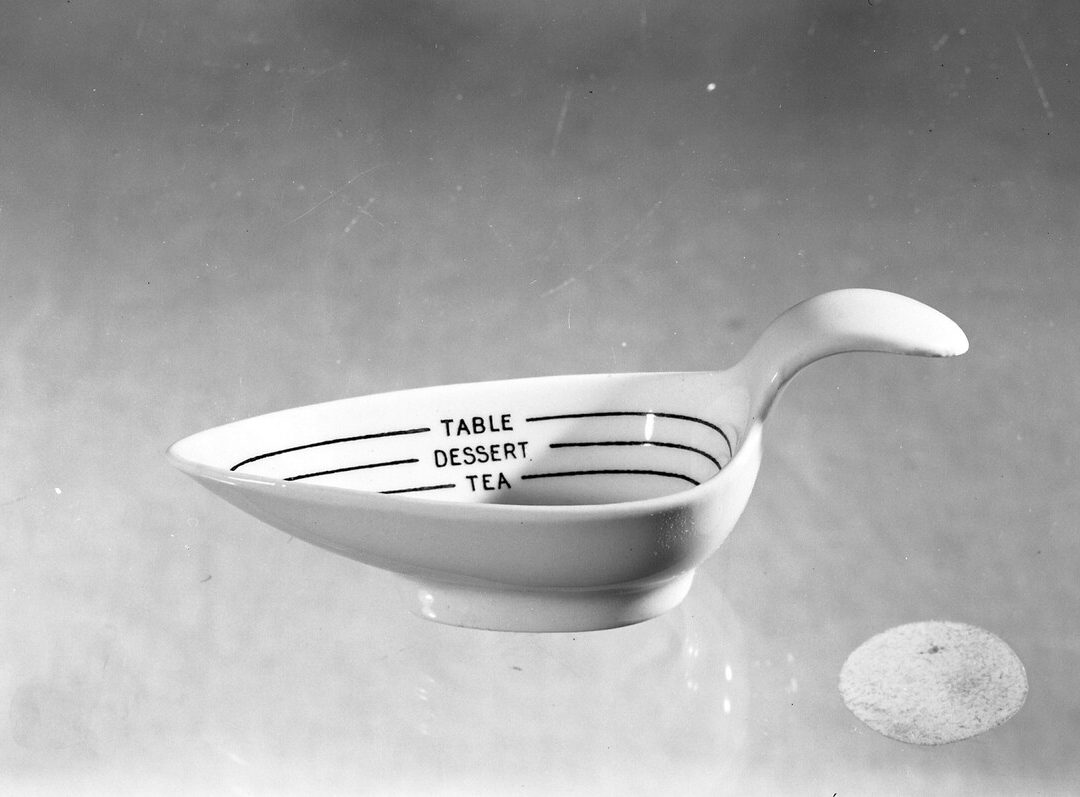
‘Quick Cooker’ bowl
Our ‘Quick Cooker’ bowl consists of two parts, the bowl, and the lid, and is a lovely piece of white glazed pottery. Dating from 1911, it was made for reheating or cooking food over water. The bowl and the lid rather handily feature a printed version of usage instructions! It was made in Stoke-on-Trent by Grimwade Ltd. of Winton.
This object is unlikely to be one that would still be used today. It’s likely been replaced by other kitchen gadgets, like steamers and possibly even microwaves, but it is still rather fun. We’re sure that if you brought it to halls it would certainly make an impression with your housemates!
Tin opener
One thing we know is that all university students will require a tin opener at some stage: whether it’s a tin of beans or a bottle of beer. This one from our collection is multi-functional, featuring a tin opener blade, a bottle opener, and a corkscrew. It was made in Chicago, USA.
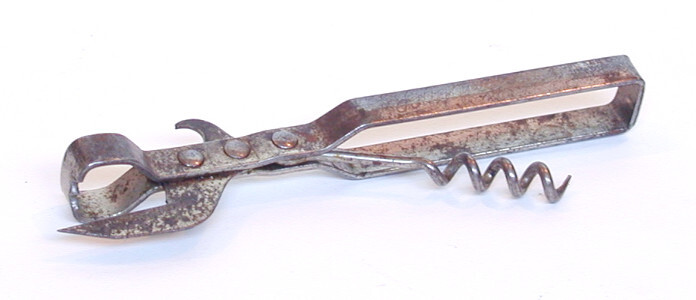
Golden syrup (huge can)
We couldn’t make a list of essentials and not include this enormous can of golden syrup. It’s 29 cm high, 17 cm wide and 10 cm deep. It would have contained a lot of syrup. 14 lbs worth, to be precise!
The can and the syrup was manufactured by popular brand Lyle & Tate in the 1970s. It would have been used in a commercial kitchen, rather than a domestic one, but the tin itself remains in beautiful condition: the iconic green and golden colours still shine today.
As we show in our café, we’re big fans of a sweet treat, and it’s a very good idea to make sure you’ve brought some home comforts with you to halls. After all, while cutlery and crockery are all well and good, it’s important not to forget the things that make you smile.
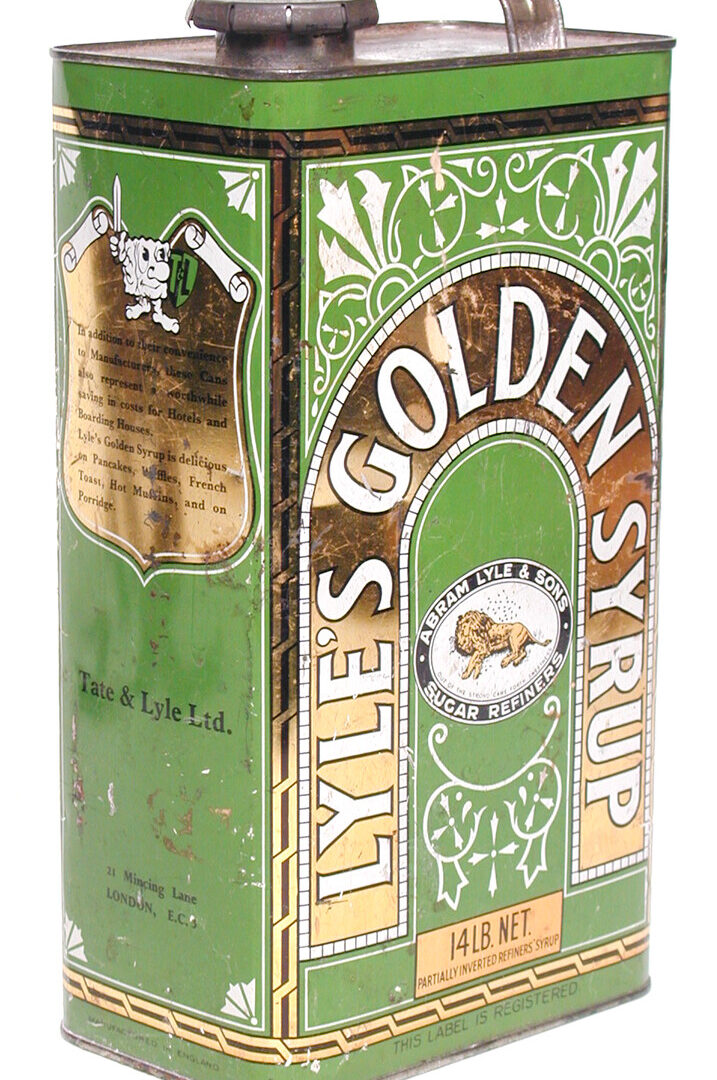
Interested in finding out more?
If you’d like to see some of these objects in person, as well as many more collections, photographs and artworks depicting the history of the English countryside and its people, plan your free visit to The Museum of English Rural Life today!
With our premises on Redlands Road, Reading, we’re a stone’s throw away from the University of Reading’s Whiteknights campus, and we have lots for you to see, do and enjoy: from exhibitions, to events, to our café and garden spaces.

